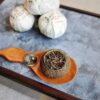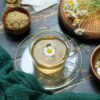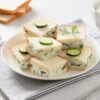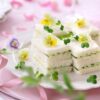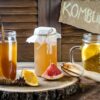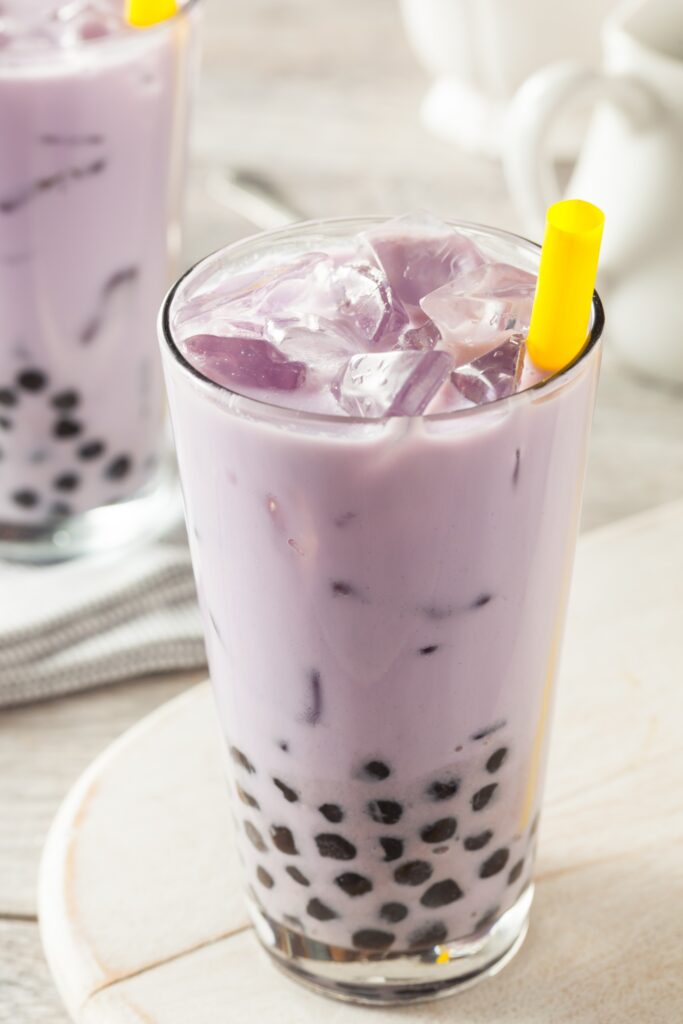
Few concoctions have captured the hearts and taste buds of tea enthusiasts quite like taro boba tea. This delightful fusion of flavors has taken the world by storm, offering a unique and irresistible experience that transcends mere thirst quenching. With its vibrant hues, chewy tapioca pearls, and a symphony of flavors, taro boba tea has become a beloved indulgence, captivating palates and igniting a craze that shows no signs of abating.
What is taro boba tea?
Taro boba tea, also known as taro milk tea or taro bubble tea, is a refreshing and creamy beverage that combines the earthy and subtly sweet flavors of taro root with the richness of milk and the delightful chewiness of tapioca pearls, commonly referred to as “boba.” This harmonious blend of textures and tastes creates a sensory delight that has won the hearts of countless tea enthusiasts worldwide.
The history and origin of taro boba tea
The origins of taro boba tea can be traced back to Taiwan in the 1980s, where the concept of bubble tea was first introduced. As the popularity of this innovative beverage grew, creative minds began experimenting with different flavors, and taro quickly emerged as a standout contender. The unique taste and vibrant purple hue of taro root, combined with the creamy texture of milk and the playful addition of chewy boba pearls, resulted in a winning combination that captured the imagination of tea lovers globally.
The unique flavor profile of taro boba tea
Taro boba tea’s distinctive flavor profile is a harmonious fusion of earthy and sweet notes. The taro root, a starchy vegetable widely cultivated in tropical regions, imparts a subtle nutty and vanilla-like taste that is both comforting and intriguing. When combined with the richness of milk and the sweetness of natural or artificial flavors, the resulting beverage is a delightful balance of flavors that lingers on the palate, leaving a lasting impression.
Ingredients used in making taro boba tea
To create the irresistible charm of taro boba tea, a carefully curated selection of ingredients is required:
- Taro root powder or puree: The star ingredient, providing the signature flavor and vibrant purple hue.
- Milk: Typically whole milk or non-dairy alternatives like almond or oat milk, lending a creamy texture.
- Sweeteners: Sugar, honey, or syrups are used to balance the earthy notes of taro.
- Tapioca pearls: The chewy, gelatinous pearls that add a delightful textural contrast.
- Flavorings: Vanilla, coconut, or other extracts may be added to enhance the overall taste profile.
How to make taro boba tea at home
For those seeking to recreate the magic of taro boba tea at home, the process is surprisingly simple:
- Prepare the taro base: Whisk together taro powder or puree with milk and sweetener until well combined.
- Cook the tapioca pearls: Boil the tapioca pearls according to package instructions until they achieve the desired chewiness.
- Assemble the drink: Layer the cooked tapioca pearls in a glass, then pour the taro milk mixture over them.
- Garnish and enjoy: Top with whipped cream, crushed taro chips, or a drizzle of condensed milk for an extra indulgent touch.
Popular variations of taro boba tea
While the classic taro boba tea is a beloved staple, creative minds have introduced various delectable variations to cater to diverse palates:
- Taro coconut boba tea: Infused with the tropical essence of coconut, this variation adds a refreshing twist to the classic.
- Taro matcha boba tea: A fusion of taro and the earthy notes of matcha green tea, creating a unique and harmonious flavor profile.
- Taro brown sugar boba tea: The addition of rich, caramelized brown sugar syrup adds a depth of flavor and a touch of sweetness.
- Taro boba smoothie: A thicker, blended version that combines taro, milk, and boba pearls into a creamy, indulgent treat.
Health benefits of taro boba tea
Beyond its irresistible taste, taro boba tea offers several potential health benefits:
- Rich in antioxidants: Taro root is a good source of antioxidants, which help protect the body against oxidative stress and inflammation.
- Dietary fiber: The tapioca pearls and taro root contribute to the overall dietary fiber content, aiding digestion and promoting feelings of fullness.
- Calcium and vitamin D: When made with milk, taro boba tea provides a boost of calcium and vitamin D, essential for bone health.
- Low-fat option: By using non-dairy milk alternatives, taro boba tea can be a delightful low-fat treat for those watching their calorie intake.
Where to find the best taro boba tea
While homemade taro boba tea can be a delightful endeavor, many dedicated establishments have mastered the art of crafting this irresistible beverage. From trendy bubble tea shops to authentic Taiwanese cafes, seeking out the best taro boba tea can be an adventure in itself. Popular destinations for taro boba tea enthusiasts include:
- Specialty bubble tea chains like Gong Cha, Chatime, and Kung Fu Tea.
- Local Taiwanese or Asian-inspired cafes and restaurants.
- Food festivals and night markets, where vendors often showcase their unique takes on this beloved beverage.
The irresistible charm of taro boba tea
Taro boba tea has undoubtedly captured the hearts and taste buds of tea enthusiasts worldwide. Its captivating fusion of flavors, textures, and vibrant hues has elevated it from a mere beverage to a cultural phenomenon. Whether enjoyed as a refreshing treat on a warm day or savored as a comforting indulgence, taro boba tea’s irresistible charm lies in its ability to delight the senses and bring joy to those who partake in its delightful experience.

